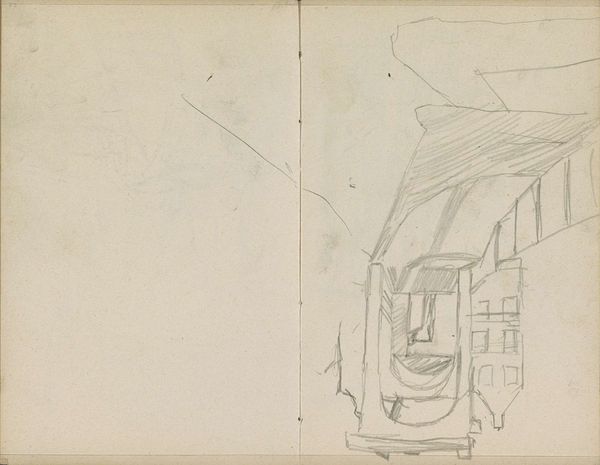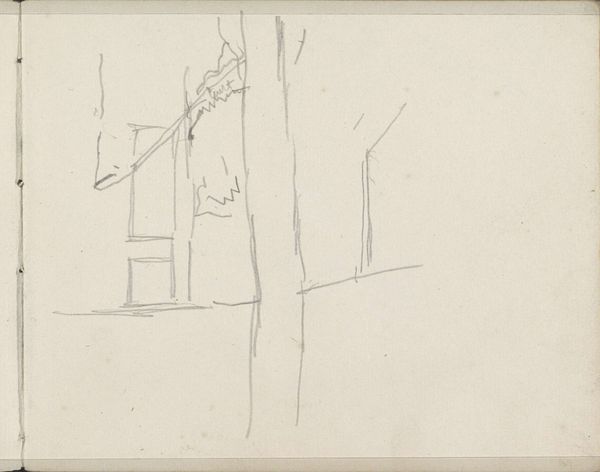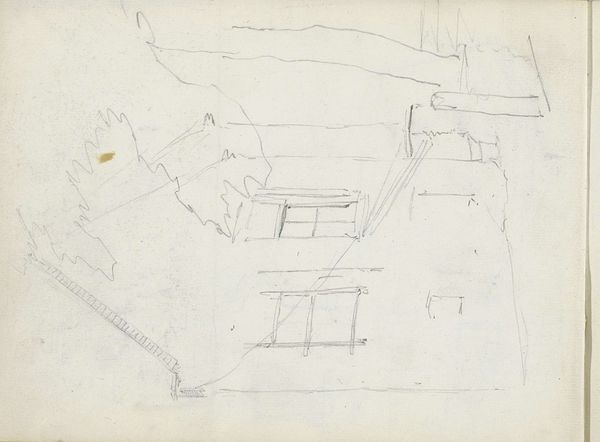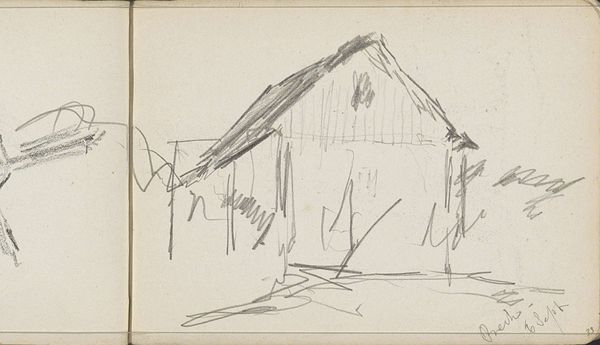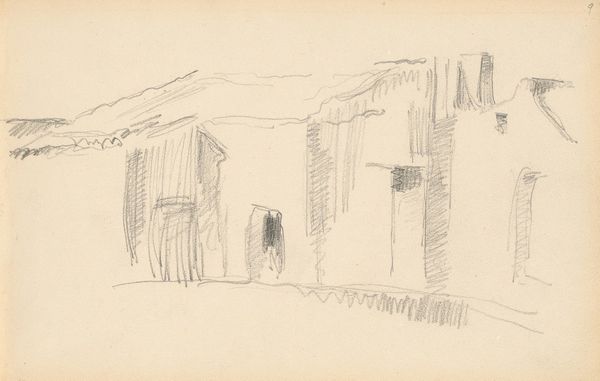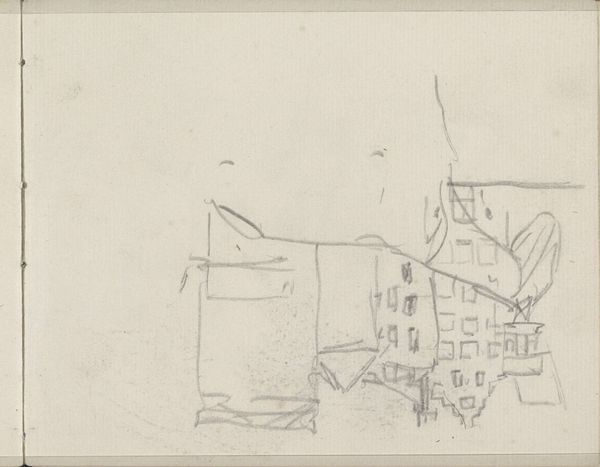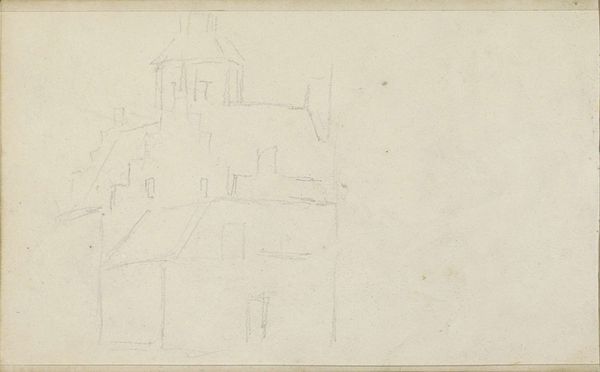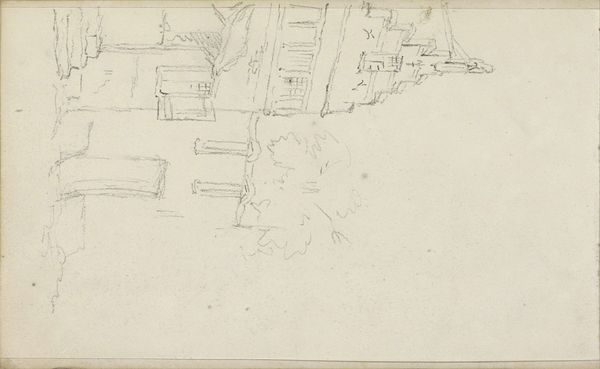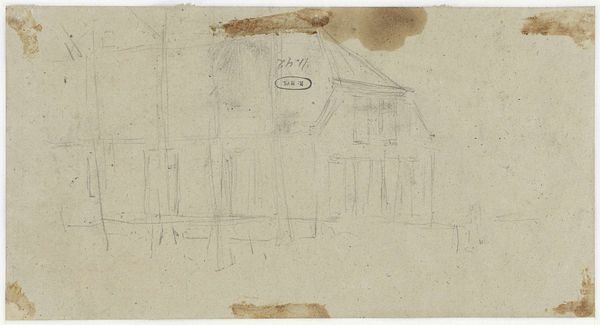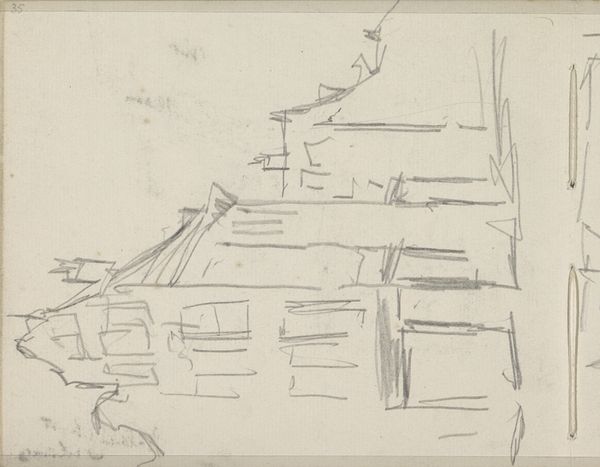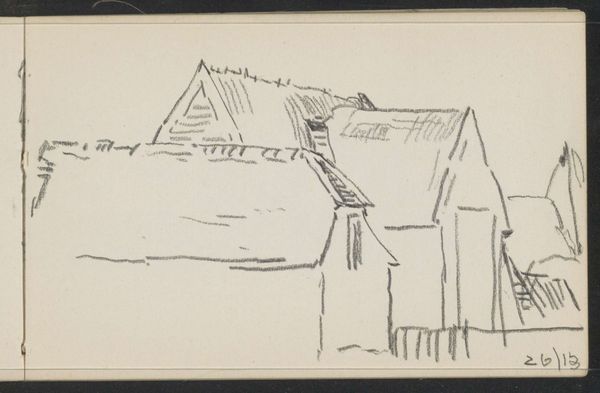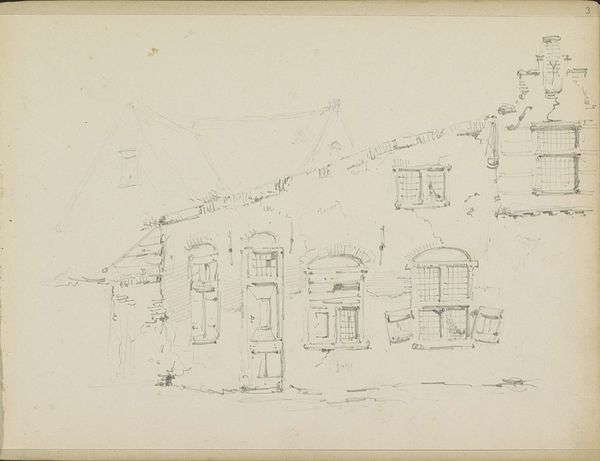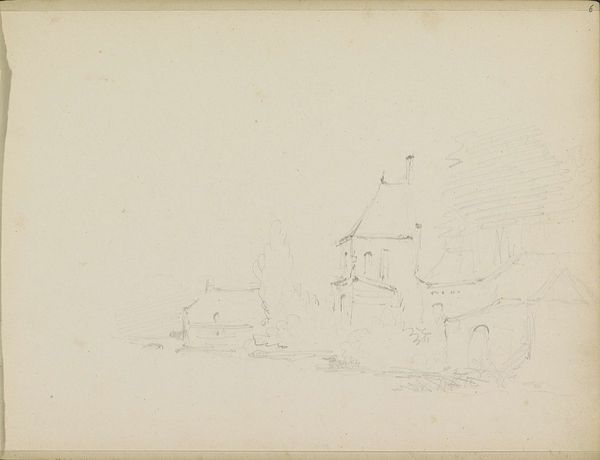
Copyright: Rijks Museum: Open Domain
Editor: We are looking at "Huis," a sketch created between 1880 and 1886 by Louis Apol. It's housed here at the Rijksmuseum. The immediate thing that strikes me is its sparseness – the artist's deliberate use of line and the vast emptiness surrounding this single, simple dwelling. What do you make of it? Curator: Indeed. The stark simplicity is paramount. Notice the economy of line, each stroke purposefully defining the essential structure. The texture, almost brittle, suggests a specific quality of paper, influencing the character of the drawing itself. Apol isn't merely representing a house; he's exploring the relationship between line, form, and negative space. Editor: So you're focusing on how the materials themselves communicate meaning. What about the composition, the placement of the house? It seems intentionally isolated. Curator: Precisely. Consider the spatial relationships. The placement on the right creates a dynamic tension, an imbalance forcing the viewer to actively engage with the emptiness. This asymmetry challenges traditional notions of compositional harmony, prompting us to contemplate the significance of absence. How does that make you feel? Editor: It feels unresolved, like there's a question being posed. Perhaps the emptiness *is* the subject, and the house is merely a signifier of something else, something…missing? It's just a house drawn on some paper, right? I did not know it can evoke all of this... Thank you so much for opening my eyes. Curator: My pleasure. It serves as a testament to the power of reduction, that a minimal form can invite profound contemplation. This single artwork just showed a whole field to look upon.
Comments
No comments
Be the first to comment and join the conversation on the ultimate creative platform.
